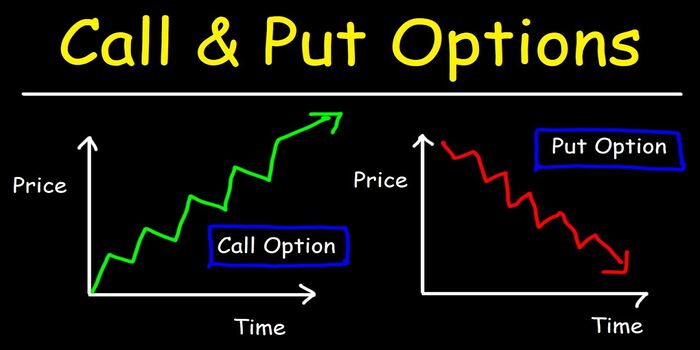Trading is among the most difficult activities; learning about it and developing a strategy for it is both ongoing processes that need substantial work. Day traders and swing traders are the two main categories of active traders. Both strategies focus on making quick money off of short-term stock price fluctuations rather than investing in growth over the long term. Yet, the two trading approaches are not identical. In this article, we'll compare and contrast day trading with swing trading and highlight the benefits and drawbacks of both.
Day Trading
Making a number of deals during the course of a single day is a hallmark of the day trading style. Technical analysis and complex charting systems are crucial tools for day traders, who use them to see trends in the market and time their entries and exits accordingly. Day traders earn a career by generating tiny returns on multiple transactions and limiting losses on bad deals. Most day traders will close all their trades each day and will not hold any positions or hold assets overnight.
The Benefits of Day Trading
The day trading strategy is not like the long-term or even intermediate-term investment strategies. While day trading is exciting for some investors, it is not for everyone. Day trading, though, is about more than just making money; it's also about facing up against the market every day and enjoying the excitement of high-risk living.
Those who engage in day trading may often do it on their own time. Any investor with sufficient personal cash may trade whenever they wish, instead of responding to a corporation or following trading guidance from a company, and can operate as flexibly as the international markets will allow. Getting an interview for many finance-related positions requires a certain degree from a specific institution. In contrast, a degree from an elite university is not necessary to participate in day trading. There are no set educational prerequisites to enter the field of day trading; however, some training in technical research and automated trading may be useful.
Negative aspects of day trading

SEC: "Day traders often incur significant financial deficits in their initial weeks of trading, and most do not become profitable." Despite the SEC's warnings, many day traders make enormous losses on loaned funds, either via margined transactions or through family and friends.
A significant portion of a day trader's budget often goes on trading equipment and infrastructure. High-frequency market participants, hedge fund managers, and many other market specialists spend millions to obtain trading advantages, making it difficult for day traders to make a profit. Day traders have to invest considerably in trading platforms, charting tools, and powerful computers to keep up with the market. Day trading also has continuing costs that must be borne over time. Day traders' transaction charges may be greater than typical because of the large number of deals they make. Since day traders make so many deals, they may also have to pay for commissions and real-time price quotations, which may mount up quickly.
For an investor to be effective in day trading, they need to devote their whole focus to the task at hand. As a result, most day traders forego traditional employment in favor of the volatile financial markets. A day trader's holdings might swiftly go from lucrative to completely out of money; therefore, he or she must pay close attention throughout market hours. On top of that, day traders may use dozens of measures for a wide variety of assets, all of which are subject to rapid change.
Swing Trading
Swing trading involves recognizing stock, commodity, and currency fluctuations over days. It might take several days to many weeks for a swing trade to pay off. A swing trader isn't expected to pursue trading as a full-time job. However, a trader may be both.
What You Can Gain From Swing Trading
Swing trading is accessible to everyone who has the necessary expertise and investment funds. Swing traders, on the other hand, may go about their day without constantly monitoring the market since their time horizon is much larger (days to weeks, as compared to minutes or hours). They are able to do so while keeping a full-time jobs elsewhere. It is possible for a swing trader to use stop-loss orders. Stop orders may be executed at an adverse price, but this is still preferable to the day trading practice of constantly keeping tabs on every open position. Therefore, swing trading may be partially automated provided you know your holdings in advance, create proper orders to trigger at those points, and are confident in the implementation of what you predict.
With swing trading, you may save money upfront. One computer and standard trading tools are sufficient for swing trading. It doesn't need the cutting-edge tools used in day trading. The longer you maintain a position, the bigger the price fluctuation and return possibilities opposed to day trading.
Problems with Swing Trading

To be successful, swing trades often require many days or weeks to develop. There's a greater possibility of circumstances altering and rendering your position unsuccessful while it's still open. Furthermore, your funds will be committed to a particular position for a longer timescale, meaning you'll need to be okay with being illiquid for extended stretches of time until you can sell. It's true that the contrary is also true, that the risk of loss is higher along with the possibility of higher profits. Holding a stake overnight or longer might increase losses if prices deviate from your original forecast.
The excitement level of swing trading is often lower than that of day trading. As a less exciting kind of investing, swing trading is typically perceived as requiring less concentration and personal engagement. Swing trading, in contrast to day trading, is less dependent on fast-moving trends and instantaneous price movement and may be considered by some investors as a secure but less exciting strategy.
Key Distinctions
Each and everyday trading & swing trading has its benefits and downsides. The ideal course of action for traders is the one that takes into account their individual strengths, interests, and circumstances. People who are determined, disciplined, and diligent and who have a genuine interest in trading can consider day trading. Swing trading is an efficient method of setting positions, executing fewer transactions, and maybe earning more profit, especially for those who are not willing to devote even more time to trading.
Bottom Line
To be successful in day trading, you need to have a solid grasp of technical trading & charting. Because day trading is hectic and demanding, traders must be able to remain cool and regulate their emotions when under pressure. Last but not least, day traders should expect to occasionally incur a loss of 100% of their investment. While these skills are certainly helpful in swing trading, they are not necessary. Swing trading is a good alternative for those who want to engage in the market but still maintain their day jobs since it can be started by anybody with some initial funds and does not need constant monitoring of the market. Instead of relying just on technical assessment, successful swing traders should be able to include both fundamental and technical perspectives.




